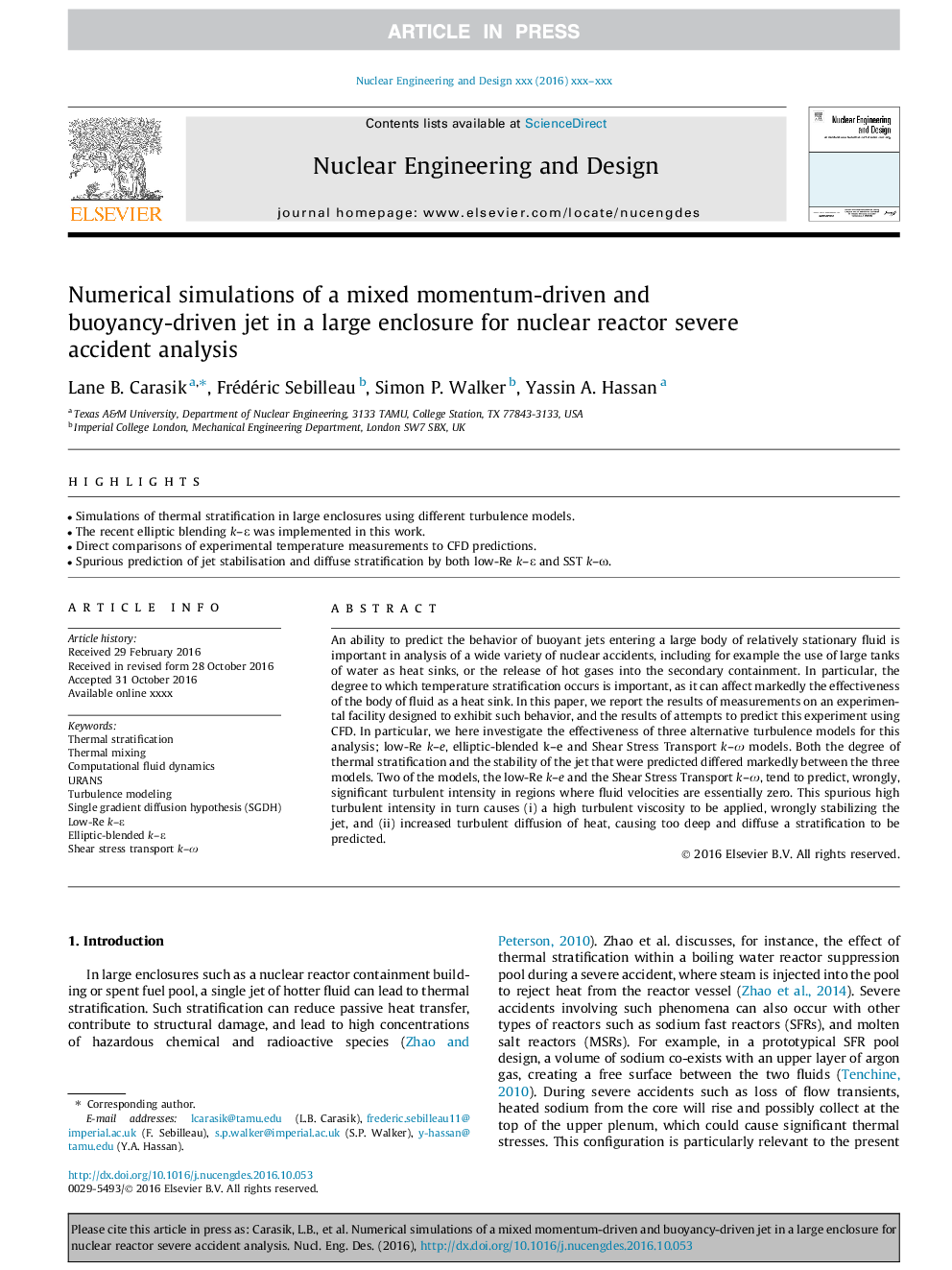| Article ID | Journal | Published Year | Pages | File Type |
|---|---|---|---|---|
| 4925760 | Nuclear Engineering and Design | 2017 | 11 Pages |
Abstract
An ability to predict the behavior of buoyant jets entering a large body of relatively stationary fluid is important in analysis of a wide variety of nuclear accidents, including for example the use of large tanks of water as heat sinks, or the release of hot gases into the secondary containment. In particular, the degree to which temperature stratification occurs is important, as it can affect markedly the effectiveness of the body of fluid as a heat sink. In this paper, we report the results of measurements on an experimental facility designed to exhibit such behavior, and the results of attempts to predict this experiment using CFD. In particular, we here investigate the effectiveness of three alternative turbulence models for this analysis; low-Re k-e, elliptic-blended k-e and Shear Stress Transport k-Ï models. Both the degree of thermal stratification and the stability of the jet that were predicted differed markedly between the three models. Two of the models, the low-Re k-e and the Shear Stress Transport k-Ï, tend to predict, wrongly, significant turbulent intensity in regions where fluid velocities are essentially zero. This spurious high turbulent intensity in turn causes (i) a high turbulent viscosity to be applied, wrongly stabilizing the jet, and (ii) increased turbulent diffusion of heat, causing too deep and diffuse a stratification to be predicted.
Related Topics
Physical Sciences and Engineering
Energy
Energy Engineering and Power Technology
Authors
Lane B. Carasik, Frédéric Sebilleau, Simon P. Walker, Yassin A. Hassan,
